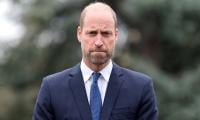‘The change at the finance ministry’ – this was the title of my last article printed in these pages on April 6. Little did I know at the time that here I’d be: writing another article within ten days on the same subject – except this time it’s not just about finance but a major cabinet shakeup.
At that time, Hafeez Shaikh had been removed and replaced by Hammad Azhar. Now, within 16 days, Hammad has been replaced by Shaukat Tareen. In less than three years, Shaukat Tareen will be the fourth finance minister in the PTI government. For a party which came into power on the back of its visionary economic program, one would have expected someone from the party itself occupying this position on a permanent basis.
Shaukat Tareen’s appointment is part of a major cabinet reshuffle – the fifth in less than three years. Except for Shaukat Tareen, there is no new face in the cabinet. For Hammad Azhar, this will be the fifth ministry in less than three years, an average of less than six months in each of the ministries. Starting with revenue in August 2018, he was moved to economic affairs as he failed to increase tax revenues or initiate any fundamental reforms. But the failure was rewarded with an important ministry like economic affairs. Barely had he settled down in the new ministry was he moved to industries.
The worst was yet to come. Appointed finance minister on March 31, he has now been unceremoniously removed after just 16 days and given the energy portfolio. This ministry was headed by Omar Ayub and – despite criticism by the opposition and the media – the PM continued to maintain that Omar’s performance was outstanding. After Nadeem Babar was fired last month, it was only a matter of time before Omar Ayub faced the same fate.
While the PM or government spokespersons will not admit it, Omar has actually been removed because of extremely poor performance. Despite repeated increases in electricity tariffs, the circular debt continued to increase – more than doubling in the last 30 months. In addition, not only were the circular debt figures wrongly reported but his commitment to eliminate circular debt by December 2020 was not just far-fetched but hilarious too. The PM was left with no option but to replace him. Surprisingly, though, he has been rewarded with the key Ministry of Economic Affairs.
In this game of musical chairs, in order to accommodate Omar Ayub in the Economic Affairs division, Khusro Bakhtiar had to be removed. He has been given the industries ministry, his fourth in the last 30 months. Fawad Chaudhry was unceremoniously removed from the information ministry in April 2019 and replaced with Firdous Ashiq who was later fired as well. Fawad now makes a comeback replacing Shibli Faraz who takes over science & technology.
One would question the performance of several other ministers who even after almost three years have nothing to show in terms of delivery. Razzak Dawood has failed to increase exports despite significant rupee depreciation and billions of rupees in incentives to the export sector. Unless we see a major improvement in the next two months or so, exports after three years will be less than where they stood in June 2018. In the last year of the PML-N government, exports started to turn around with an increase of 13 percent. Since then, exports have remained more or less stagnant.
The privatisation ministry is another major failure with not a single penny of transaction over the last 32 months. Compare that with the PML-N government in which privatisation transactions worth more than Rs260 billion had been undertaken in less than two years. These included global transactions such as HBL (earning more than one billion dollars) and UBL (almost 400 million dollars). These transactions created hype in the global financial markets where Pakistan was able to showcase its full economic potential.
Imran Khan had promised an efficient and lean cabinet before coming into power. He publicly declared that his cabinet would have between 15 and 20 ministers. As it turns out, it definitely consists of more than 50 ministers, special assistants and advisers. More important than quantity is the issue of quality. That is where the current government has failed to meet the expectations of the people. We were all told by Imran that he has a team of outstanding professionals, the kind we have never seen in our history. But within months of coming into power, it became clear that the PM has no team or at least the quality team that he had promised.
The reality soon dawned on the PM himself and within eight months, the first major shakeup took place. Asad Umar, on whom so much depended for changing the economic misery of the people, was gone. So was Fawad Chaudhry, the then information minister. More alarmingly, they were replaced by people no one would have ever imagined. Hafeez Shaikh was brought in as finance adviser while Firdous Ashiq replaced Fawad Chaudhry.
In cricketing parlance, those not performing must face the axe. The PM as a former captain knows this better than anyone. But he has hardly followed cricketing principles for his prime ministership. Rather than firing those who have not delivered, he has only changed portfolios. If Omar Ayub was not good enough as energy minister, how will he fare as economic affairs minister? In several cases, the PM has overlooked or simply ignored appointments with serious issues of conflict of interest.
We will have to see whether this is the final round of cabinet reshuffling. For sure, the PM will be left with no more options to chop and change his ministers. If this experiment fails, as it looks imminent, the PM will have to seek other options including dissolving the assemblies and going back to the people. Simply shuffling the cards is no more an option.
The writer is the spokesperson for Nawaz Sharif and Maryam Nawaz, and former governor Sindh.
Twitter: @Real_MZubair















